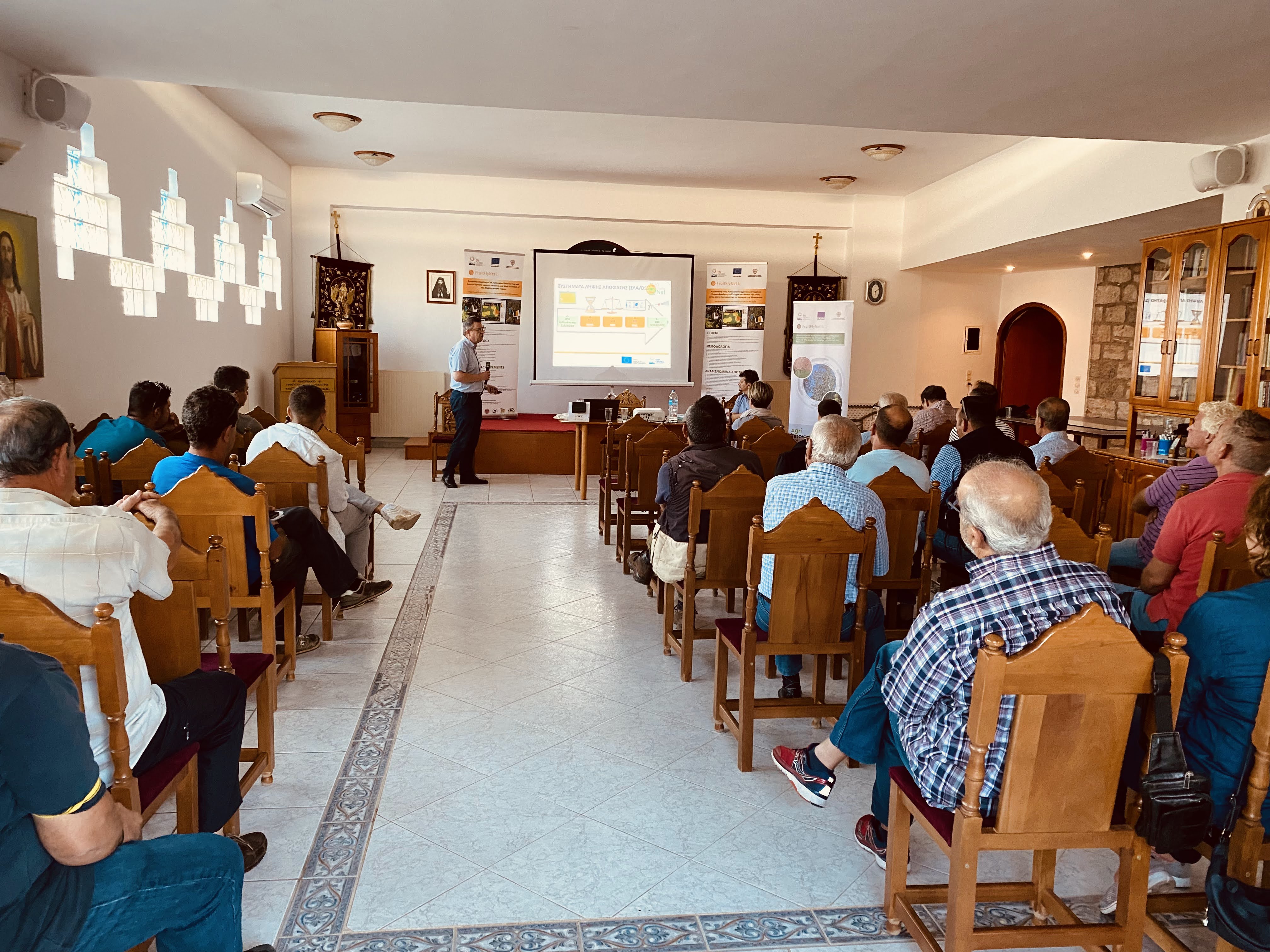
On:
FruitFlyNet-ii organised demonstration event for OliveFruitFly in Metamorphosi, Lakonia, Greece
On Thursday, October 12, 2023, a demonstration event of the OliveFlyNet organized by the Agricultural University of Athens (AUA) took place in the village of Metamorphosi in Lakonia, S. Peloponnese, where the respective wide area site of the beneficiary is located. The main aims of the demonstration were to present the achievements and the new tools produced under of the OliveFlyNet, to describe the benefits they bring to the current practices, demonstrate their functionalities and at the end to open the discussion with the stakeholders, clarify any remarks and collect their opinions attitudes and criticism, also by asking them to fill in a specifically designed questionnaire.
The demonstration event started by a welcome speech of the president of the local cooperative of farmers, describing the problems they face in the control of olive fruit fly, which is a main threat to their production and described what they expect from the new system. The members of the team of FruitFlyNet-ii project welcomed the participants and all stressed the high attendance indicating the high interest for the new developments by the farmers. The project coordinator Professor Theodore Tsiligiridis explained the frame and the aims of the FruitFlyNet-ii project and then presented the e-trap for the OliveFlyNet. The benefits of the use of the e-trap in comparison to the limitations of the conventional traps, such as the remote monitoring, the precision in counting the pest captures and the timely collection of field data. The main components of the e-trap were shown to the stakeholders and their functions explained. Then, Professor Dionysios Perdikis, technical manager of the project, explained how the decision systems developed in the OliveFlyNet use the data from the traps and other data (infestation, phenological stage of the fruits, climatic data) to decide when, where, how and what to be sprayed in the field according to Integrated Pest Management rules for applying sprayings against the olive fruit fly. Finally, Dr Costas Pontikakos presented the e-services of the OliveFlyNet related to the field digitization, the geodatabase, the remote and in-field data collection, the production of pest risk maps, the guidance for sprayings and the traceability of spraying actions using the modernized platform of OliveFlyNet and the 3D web mapping.
A vivid discussion followed with the feedback of many farmers to be positive saying that the new system can be really very helpful to them and congratulate the team for the innovative approaches developed. Comments also received regarding possible difficulties for farmers to apply the system or about its likely high cost. In the audience also agricultural engineers and extension service personnel were present taking also place in the discussions and the other activities. Next, the in-field demonstration of the system functionalities took place, and the audience had the opportunity to use the GPS tablet to collect and upload by themselves trap and tree data through mobile GIS and to explore the e-trap. At the end the participants filled in the project questionnaire for the OliveFlyNet case. The questionnaire was prepared and elaborated with comments from all the partners to be used in all the demonstrations of the project. At the end, all participants expressed their gratitude for the demonstration and implementation of the project in their olive orchards and expressed willingness to continue with the current implementation of the system up to the harvesting time. They also expressed their interest to participate in the coming Living Lab meeting and be informed for further technical developments and the progress of the commercialization process.









